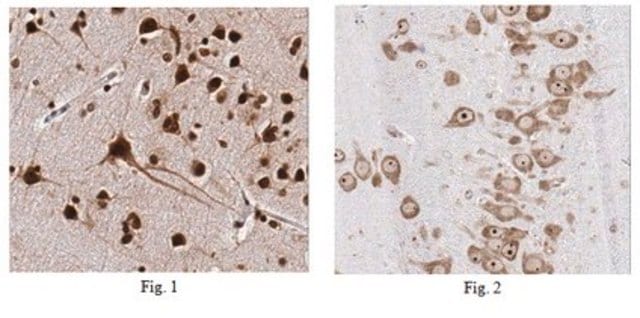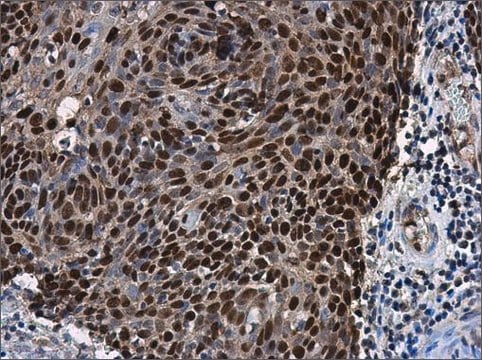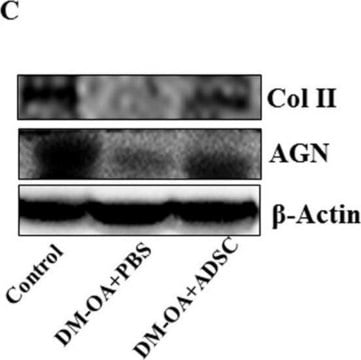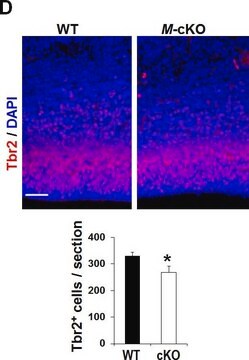MABN24
Anti-pan-Shank Antibody, clone N23B/49
clone N23B/49, from mouse
Sinônimo(s):
SH3 and multiple ankyrin repeat domains 2, SH3 and multiple ankyrin repeat domains protein 2, proline-rich synapse associated protein 1, cortactin SH3 domain-binding protein, Cortactin-binding protein 1, Proline-rich synapse-associated protein 1, cortact
About This Item
WB
western blot: suitable
Produtos recomendados
fonte biológica
mouse
Nível de qualidade
forma do anticorpo
purified antibody
tipo de produto de anticorpo
primary antibodies
clone
N23B/49, monoclonal
reatividade de espécies
mouse, human, rat
técnica(s)
immunohistochemistry: suitable (paraffin)
western blot: suitable
Isotipo
IgG1κ
nº de adesão NCBI
nº de adesão UniProt
Condições de expedição
wet ice
modificação pós-traducional do alvo
unmodified
Informações sobre genes
human ... SHANK2(22941)
Descrição geral
Imunogênio
Aplicação
Western Blot Analysis: A previous lot of this antibody detected Shank in extracts of COS-1 cells transiently transfected with Shank1, Shank2 or Shank3 plasmids. Courtesy of James Trimmer, UC Davis/NIH NeuroMab Facility.
Neuroscience
Synapse & Synaptic Biology
Qualidade
Western Blot Analysis: 2 µg/mL of this antibody detected Shank on 10 µg of rat brain membrane tissue lysate.
Descrição-alvo
forma física
Armazenamento e estabilidade
Nota de análise
Rat brain membrane tissue lysate
Outras notas
Exoneração de responsabilidade
Não está encontrando o produto certo?
Experimente o nosso Ferramenta de seleção de produtos.
Código de classe de armazenamento
12 - Non Combustible Liquids
Classe de risco de água (WGK)
WGK 1
Ponto de fulgor (°F)
Not applicable
Ponto de fulgor (°C)
Not applicable
Certificados de análise (COA)
Busque Certificados de análise (COA) digitando o Número do Lote do produto. Os números de lote e remessa podem ser encontrados no rótulo de um produto após a palavra “Lot” ou “Batch”.
Já possui este produto?
Encontre a documentação dos produtos que você adquiriu recentemente na biblioteca de documentos.
Active Filters
Nossa equipe de cientistas tem experiência em todas as áreas de pesquisa, incluindo Life Sciences, ciência de materiais, síntese química, cromatografia, química analítica e muitas outras.
Entre em contato com a assistência técnica








